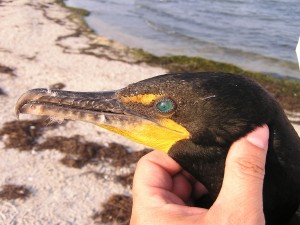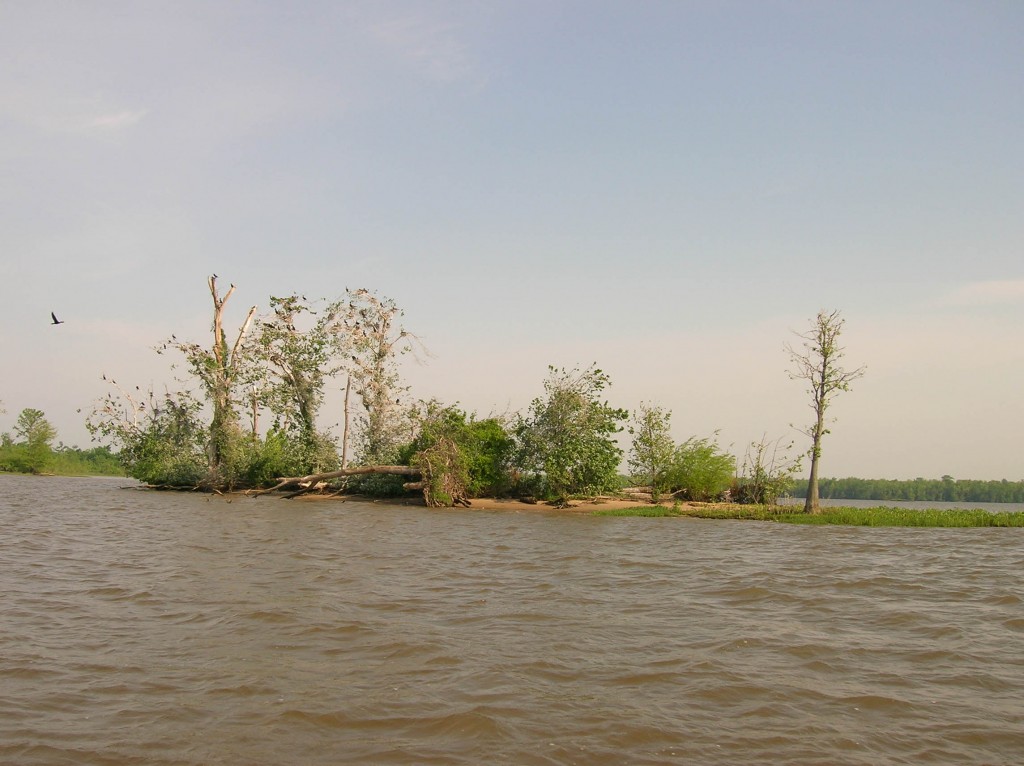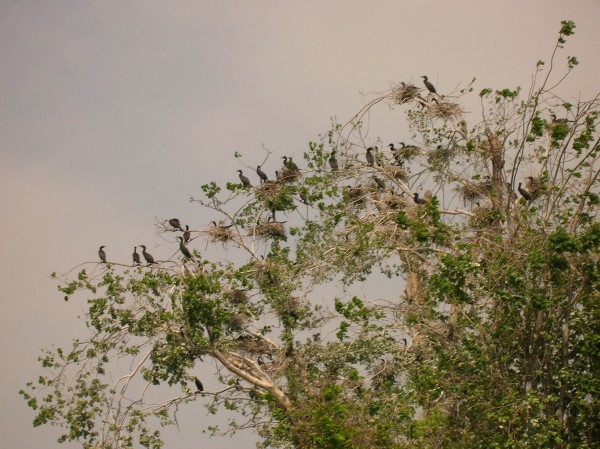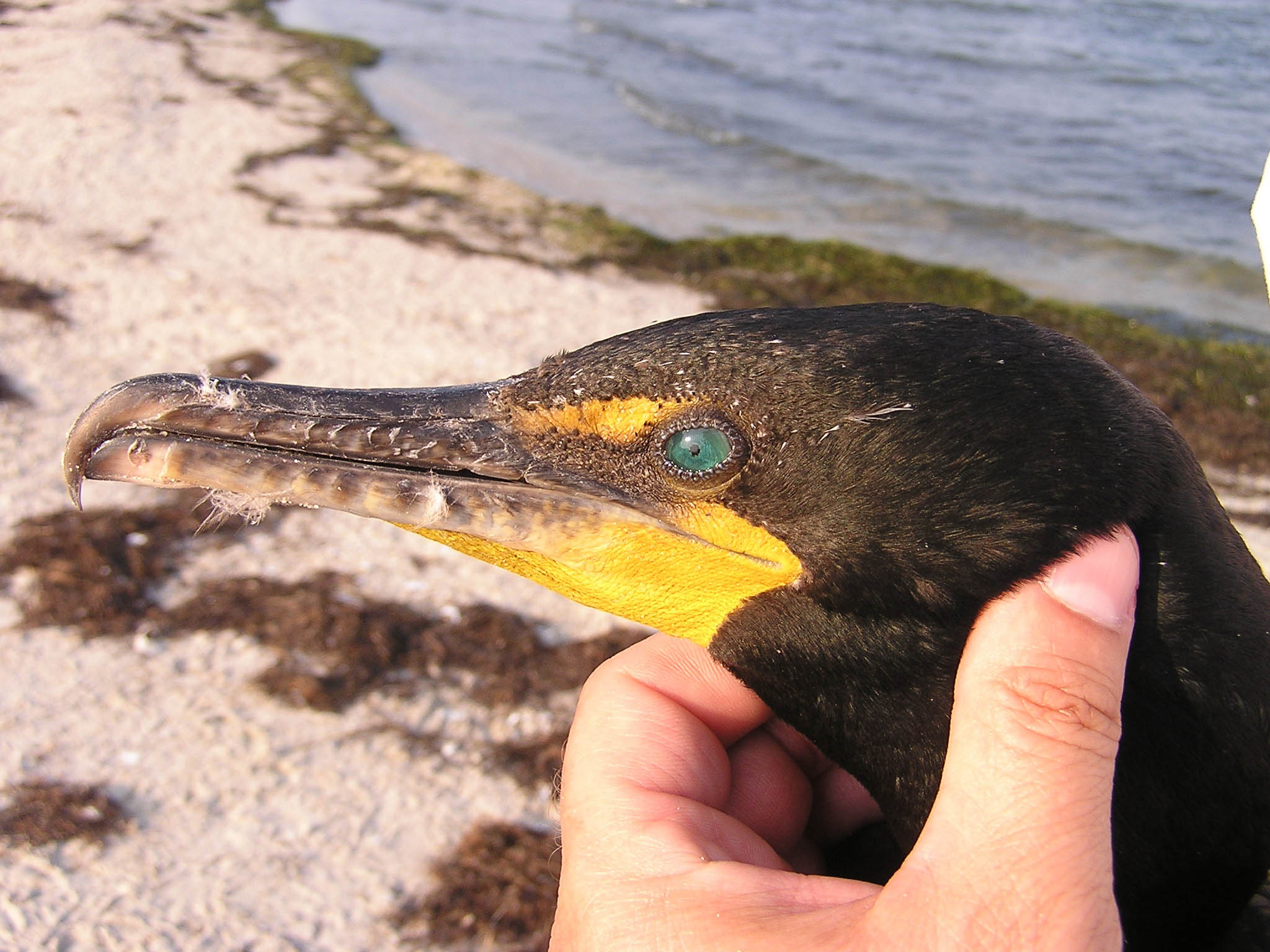Foraging distribution of cormorants & osprey on the James River
Peregrine tracking project continues to produce new info
October 6, 2008Assessing the value of wetlands (EPA marsh surveys)
October 8, 2008
Written by Adam Duerr
October 7, 2008

Close-up of an adult double-crested cormorant on the Virginia barrier islands. Photo by Bryan Watts.
As part of restoration of the Chesapeake Bay, intense research efforts have been devoted to understanding food webs that influence native species such as rockfish, menhaden, and blue crabs. However, little research has focused on the role of certain top predators, namely fish eating birds, in these food webs. The Center for Conservation Biology (CCB) is currently collaborating with researchers at Virginia Commonwealth University (VCU) and the University of Virginia (UVA) on a project designed to address these research needs. (See this issue’s article on Estimating fish demand by waterbirds in the Chesapeake Bay.)

Cormorants nesting in trees on an island near Hopewell, Virginia. This is the site of the first breeding record for double-crested cormorants in the Chesapeake Bay, in 1978. Photo by Carla Schneider.
During the summer of 2008, Adam Duerr, a waterbird biologist with CCB, helped coordinate a project to better understand the diet and foraging distribution of double-crested cormorants and osprey along a segment of the James River, a key tributary of the Chesapeake Bay. The purpose of this research was to determine the spatial extent, or area, that is used by cormorants and osprey during their breeding seasons. Adam and field assistants, Michelle Arthur and Jacob McClain, collected data on the locations where these species captured fish and recorded the species of fish that the birds consumed. By finding out where they feed and what they eat, we can better determine the roles of cormorants and osprey in the food webs of the Chesapeake Bay. While CCB focused on the birds, project partners at VCU and UVA focused parallel research efforts on fish populations.
Cormorants that nested near Hopewell, VA foraged relatively close to their breeding colony. The farthest that they moved to foraging locations during the breeding season was about 10 km (6.2 mi), which is about ¼ to ½ the maximum distance that cormorants that breed near the Canadian border forage from their colonies. This difference is likely due to incredibly large numbers of blue catfish, an introduced species, and gizzard shad, a native species, which are present in the study section of the James River.

Cormorants nesting in trees on an island near Hopewell, Virginia. This is the site of the first breeding record for double-crested cormorants in the Chesapeake Bay, in 1978. Photo by Carla Schneider.
From previous research completed by former graduate student, Andy Glass, and Dr. Bryan Watts, we know that osprey from this section of the James River consume mostly gizzard shad and catfish. Preliminary assessment of the foraging distribution of osprey indicated that they forage very close to their nests. To supplement previous research, CCB also collected activity budgets for osprey by recording the amount of time they spent flying, perching, attending their nest, and diving for fish. This activity data will allow us to refine our estimates of energy needs and total fish consumption by osprey.
The section of the James River near Hopewell, VA appears to allow double-crested cormorants and osprey to forage very efficiently by reducing the distance that these birds must travel to find food compared to other areas. This may be due to high densities of non-native blue catfish and native gizzard shad. In fact, this section of the James River has also been identified as an important concentration area for bald eagles and supports a large number of cormorants during the winter. In future years, CCB plans to expand our assessment of diets of fish eating birds to other areas of the Chesapeake Bay and continue adding to the knowledge base of their interactions with fish populations in the Bay.




